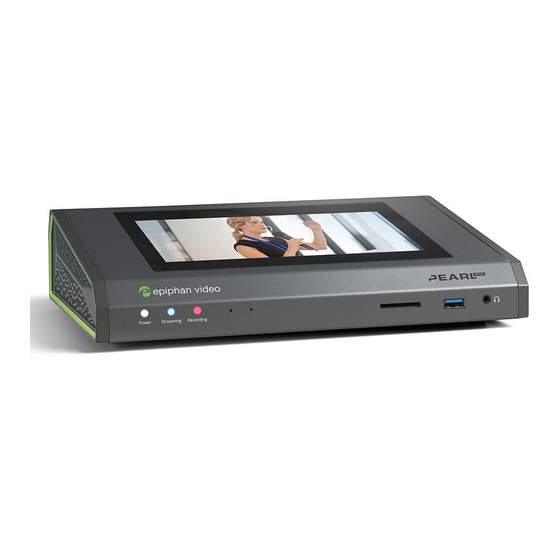
Epiphan Pearl Mini Manuals
Manuals and User Guides for Epiphan Pearl Mini. We have 1 Epiphan Pearl Mini manual available for free PDF download: User Manual
Advertisement
Advertisement
